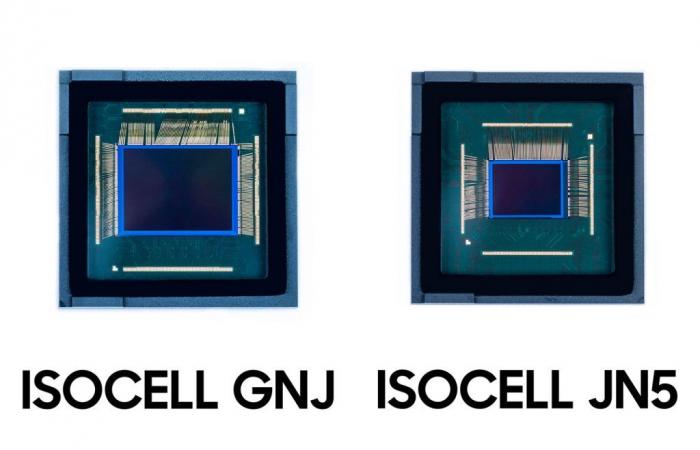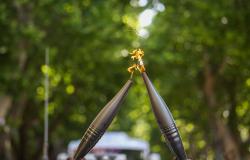Samsung unveils two new sensors for smartphone. THE Samsung Isocell GNJ et Isocell JN5 both offer a definition of 50 Mpx…but they are distinguished by their size and the technologies that they embark. A quick overview of these two promising sensors made in Korea.
Samsung Isocell GNJ: better management of light differences?
Alongside the Isocell HP9, an ultra-definition 200 Mpx sensor, Samsung unveils l’Isocell GNJun support sensible premium of 50 Mpx (8192 x 6144 pixels) of type 1/1.56 inch. Its photosites measure 1,0 µm : unsurprisingly, the pixel binning is in the game, 4 pixels being (virtually) merged into one in order to generate photos of 12,5 Mpx.
Due to its characteristics, this sensor aims to offer a much wider dynamic range. What solve one of the main concerns affecting the sensors of our mobile terminals.
On the one hand, it exploits the technology D-VTG (Dual Vertical Transfer Gate). The photosites must be able to store 1.5x more light before reaching saturation. The key is a better management of the strong gaps of brightness.
The Isocell GNJ also benefits from technology Smart-ISO Pro. As a reminder, the latter aims to combine two images, one captured at a low ISO valuethe other to a high ISO value. On the ground, this system should reduce the digital noiseincrease the amount of details in the shadow areas and avoid “burnt” areas.
We also find the function « staggered-HDR »based on “time division multiplexing”. The principle: since the capture is carried out line by line (rolling shutter), the sensor uses different exposure values. This process must first be more effective than “classic” HDR, where the device captures and merges several different images.
Portraits in backlight in front of a window, photos and videos of concert… should thus be restored in a manner more realistic.
Technology is also found « Front Deep Trench Isolation » (FDTI). Each pixel thus has a “partial isolator”. Thus, the photosites are able to collect more light – while limiting the “overflow” effect on neighboring pixels. The key is a faster autofocus and an best image qualityespecially in low light.
By its characteristics (and by its name), this new sensor recalls the Isocell GN5. A sensor launched in 2021 and which was found in particular in the Samsung Galaxy S23/S23Plus and S24/S24 Plus. In fact, it is not to be excluded that the new Isocell GNJ will be inaugurated by the Samsung Galaxy S25which should (logically) be launched at early next year.
Samsung Isocell JN5: a second, smaller 50 Mpx sensor
At the same time, Samsung unveils l’Isocell JN5. His definition of 50 Mpx and its effective pixel count (8192 x 6144 pixels) are identical to those of the Isocell GNJ… but the resemblance ends there. Indeed, the size of the Isocell JN5 is much more scaled down (type 1/2.74 inch) and its photosites are tighter (0,64 µm).
The sensor uses the pixel binning (4 pixels in 1) to deliver photos of 12,5 Mpx. But also to allow a x2 “algorithmic” zoom without requiring a dedicated telephoto lens.
Despite its small size, the Isocell JN5 incorporates several cutting-edge technologies, such as the D-VTG (Dual Vertical Transfer Gate, see above). We also find the « Dual Slope Gain »which applies different values when the light is converted into a digital signal. This significantly increases the performance of the HDRSamsung said in a statement.
Finally, the Isocell JN5’s autofocus employs a feature called « Super QPD ». So, each pixel of the sensor is used to perform the focus phase-correlated. The key is a largely AF faster than “conventional” sensors, where the number of pixels used for autofocus is much lower.
Thus equipped, this new sensor should be used on future terminals midrange. It could also find its place on some high-end smartphones… for optics secondary.






